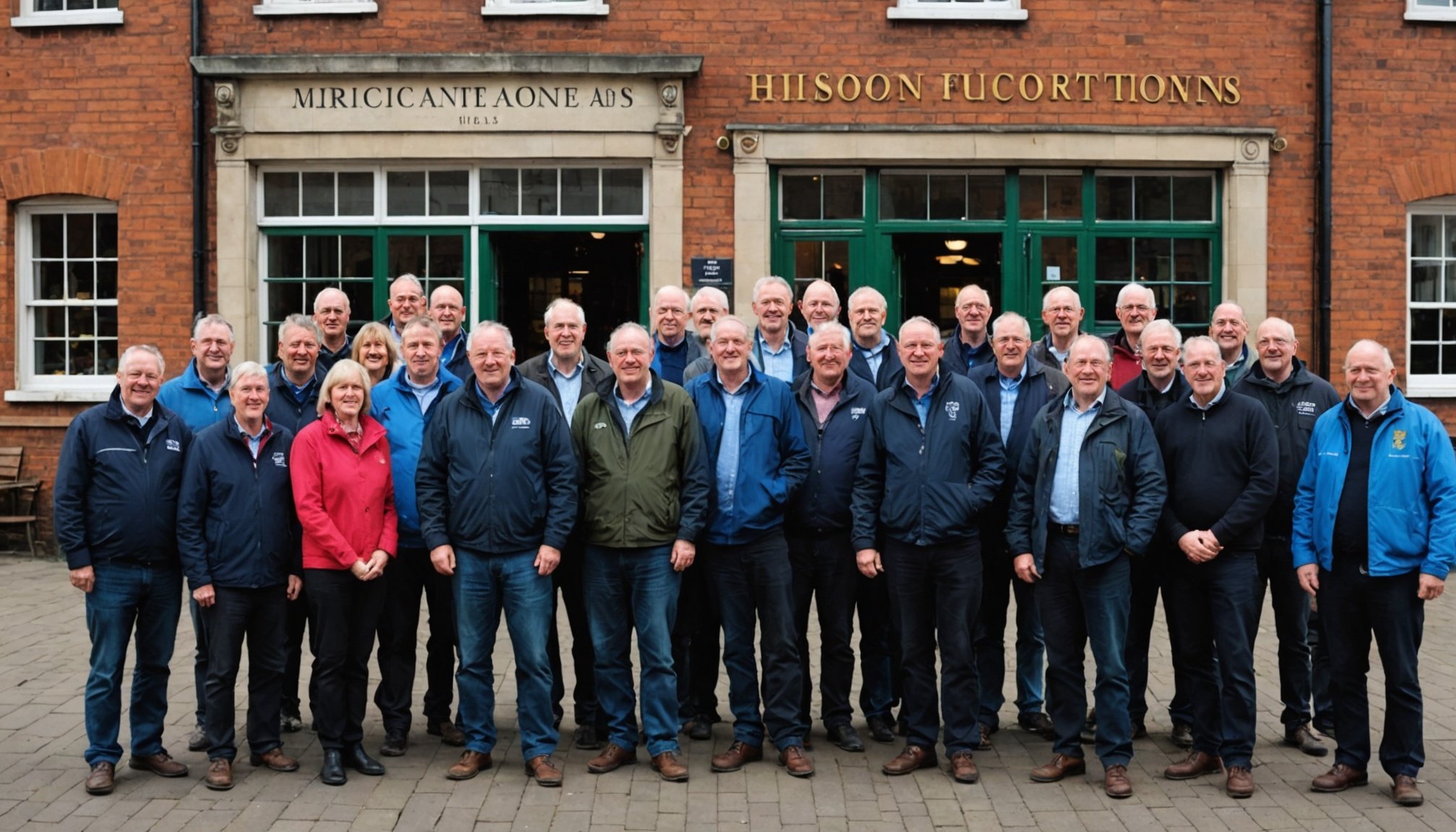Overview of the Importance of British Trade Unions
British trade unions have played a crucial role throughout history in advocating for workers’ rights and improving labor conditions. The historical evolution of these unions is significant; they have grown from small, informal associations to organized entities with substantial influence. Originating in the early 19th century, British trade unions were born out of a need for collective bargaining and worker representation.
Trade unions have shaped labor rights by campaigning for fair wages, safer working conditions, and social justice. Their persistent efforts culminated in legislative changes that established the groundwork for modern labor laws. For instance, the pivotal role they played in achieving the Eight-Hour Day is well-documented, reflecting their impact on labor standards.
Also read : Uncover Premier UK Spots to Experience Genuine British Folk Dance Traditions
Moreover, the influence of trade unions extends to local communities and industries. They have fostered a sense of solidarity among workers, contributed to the formation of cooperative societies, and impacted local economics by advocating for fair employment practices. Trade unions have also been instrumental in political advocacy, influencing policies that benefit laborers socially and economically.
Understanding the significance of trade unions requires appreciating their role in historical contexts and acknowledging their ongoing contributions to society. Indeed, their legacy is deeply embedded in the fabric of British commerce and community welfare.
Have you seen this : Explore Premier UK Sites with Fascinating Guided Tours on British Maritime Navigation History
Top-Rated Guided Tours Through Historic Trade Union Sites
Embarking on a guided tour of historic trade union sites across the UK provides a unique lens into the past. These tours are carefully curated to showcase key moments and locations in the trade union movement. Typically, itineraries include visits to places with significant ties to labor history, giving participants a deeper understanding of the events and achievements that shaped worker rights over centuries.
Popular tours often feature landmarks like the Tolpuddle Martyrs’ Museum in Dorset or the People’s History Museum in Manchester. These sites are not only historically rich but also bring tales of perseverance and solidarity to life. Participants can expect comprehensive insights from experienced guides, making the journey both informative and engaging.
Reviews from past participants generally highlight the value of these tours in enhancing awareness of trade union history. Many find the experience enlightening, leaving with a newfound respect for the struggles and victories of the labor movement. With high ratings for both educational value and professionalism, these guided tours stand out as a prime choice for history enthusiasts and those interested in the significance of labor unions in the UK.
Notable Locations in Trade Union History
Exploring the trade union landmarks across the UK offers an enriched understanding of the labor movement’s origins and influence.
The Birthplace of the Labor Movement
A focal point in the historical context of British trade unions is the Tolpuddle Martyrs’ site in Dorset. Recognized as the birthplace of the modern labor movement, it symbolizes the early struggles for workers’ rights. Visitors can delve into the story of the six agricultural laborers, whose conviction sparked a national outcry, leading to pivotal reforms.
Significant Meeting Halls and Venues
Another pivotal historical site UK includes the Cooperative Hall in Rochdale. Meeting halls like this served as venues for seminal assemblies, crucial in shaping labor rights and legislative changes. Such locales fostered discussions that mastermind strategies continuing to influence modern labor dynamics.
Memorials and Museums Dedicated to Trade Unions
Museums dedicated to trade unions, such as the People’s History Museum in Manchester, offer immersive experiences into the triumphs and tribulations of trade unions. They provide historical significance insight into unions’ objectives, echoing stories of resilience and solidarity. Here, visitors witness the preservation of labor rights’ legacies, ensuring these pivotal movements resonate through generations.
Tips for Booking Your Guided Tour
Planning a guided tour through Britain’s historic trade union sites can be a rewarding venture. Proper preparation ensures not only a seamless experience but also maximizes the educational value.
When selecting a tour operator, it’s crucial to look for those well-rated for professionalism and expertise. The significance of trade unions should be highlighted in their itineraries, offering insight into both the historical context and labor rights evolution. Verifying credentials and reading prior participants’ reviews can provide assurance of quality and reliability.
Booking timelines play a pivotal role in preparation. Tours can often be seasonal, so securing your spot months in advance, especially during peak travel periods, is advisable. This consideration ensures you get the best experience without compromising on preferred dates or sites of interest.
Anticipate what you’ll encounter during these tours; expect comprehensive insights from guides who bring the stories of the labor movement to life. Bring necessary items such as comfortable footwear, weather-appropriate clothing, and a notebook for jotting down key points or reflections. Embracing these tips will enhance your journey through the rich tapestry of the UK’s labor history.
User Testimonials and Experiences
Exploring user testimonials offers real insight into the immersive experiences participants find during their tours of historic trade union sites. Such feedback often encapsulates the depth and impact of these tours on a visitor’s understanding of trade union history.
Participants frequently highlight common themes in their reviews, such as the comprehensive storytelling and the passion of the guides, which bring past struggles to life vividly. This immersive approach not only conveys facts but also instills a deep appreciation for the trade union movement’s legacy.
For many, these tours have notably transformed their perspective on the nuances of labor rights’ history. The meticulous attention to detail in narrating events from the industrial period grips visitors, leaving them with a newfound respect for the activists’ perseverance.
The impact of these tours is profound; they often inspire reflections on social justice’s ongoing relevance, encouraging participants to delve deeper into the subject post-visit. Reviews repeatedly underscore the enriching experience provided by the engaging narratives and interactive elements.
User experiences thus suggest that these tours are an excellent way to engage with British labor history, offering visitors not just information but a meaningful connection to the past.
Additional Resources and Maps for Exploration
For those eager to delve deeper into the British trade union history, a variety of resources are available to enhance your exploration. Suggested reading materials abound, providing an in-depth look into the historical context of union activities and their enduring significance. Books such as “The Making of the English Working Class” offer comprehensive narratives about the labor movement’s evolution, giving readers detailed insights into the grassroots organisation and struggles.
Moreover, resources for self-guided exploration can enrich your understanding of these historic sites. Digital platforms like the app “Explore UK Histories” offer interactive maps that guide visitors through crucial trade union landmarks. This technology-powered approach increases accessibility, allowing people to engage with history at their pace, using detailed exploration maps tailored to individual interests.
Digital guides offer detailed observations on notable locations, both in terms of historic relevance and current exhibitions. They can be quite helpful in charting your journey, ensuring you don’t miss essential landmarks connected to the trade unions’ legacy. Embrace these resources as part of your journey to gain a richer understanding of the impact trade unions have had on the British socio-economic fabric.











